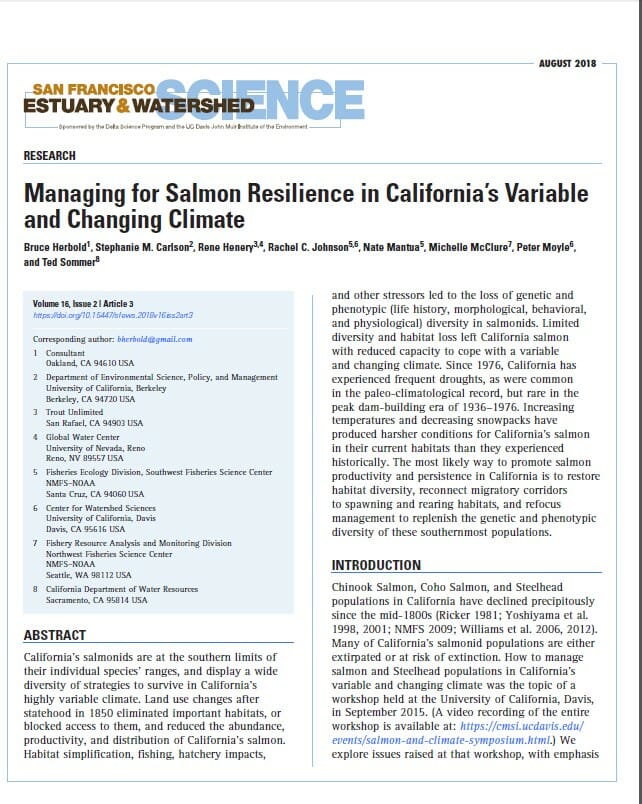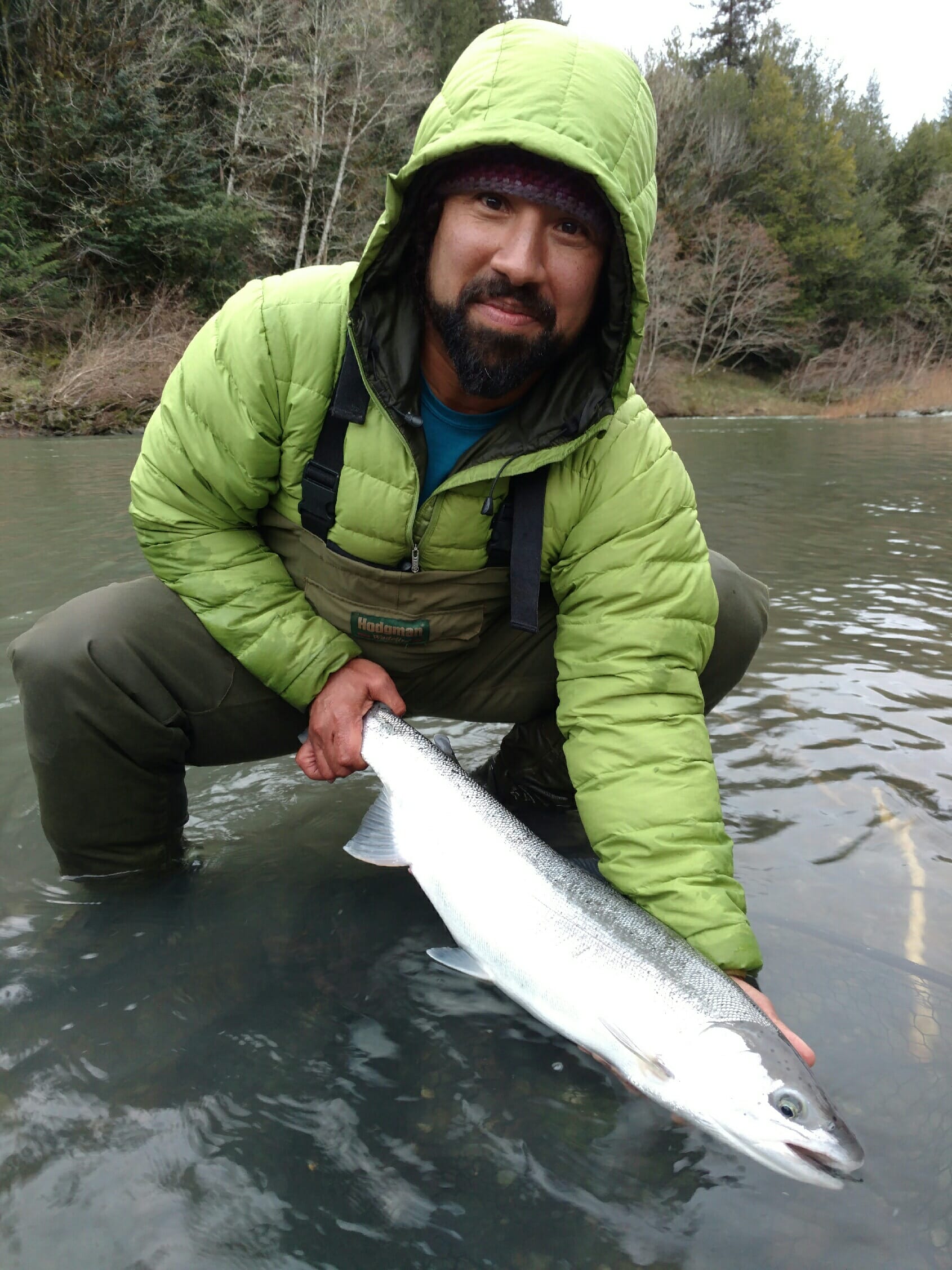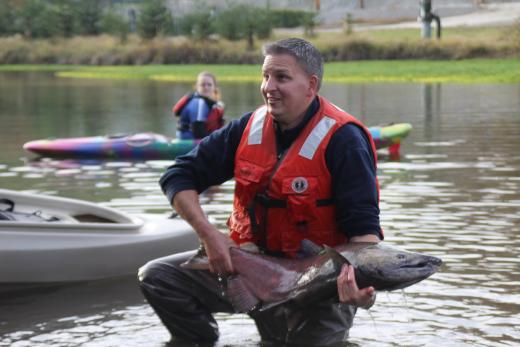Adult Chinook salmon in California’s San Joaquin River.
California salmon and steelhead reside at the southern limits of the ranges of their various species, and have evolved a diversity of strategies to survive in California’s highly variable
climate. However, alterations in land use and resource management over the past century and a half have degraded, blocked access to, or outright eliminated key salmonid habitats in the Golden State and reduced the abundance and distribution of California’s native salmon and steelhead.
Trout Unlimited is working hard in California to recover at-risk salmon and steelhead populations, from endangered coho in coastal streams north of San Francisco to Chinook salmon runs in the Sacramento and San Joaquin Rivers to wild steelhead in the fitful streams on the south-central coast. TU’s California Science Director, Rene Henery, PhD, is spearheading much of this effort through contributions to cutting-edge research and policy initiatives aimed at restoring lost or disconnected habitat, removing barriers to fish migration, and improving water supply management to improve flows when salmon and steelhead need them most.
Henery recently co-authored a paper on how we can best boost wild salmon numbers and increase their odds of persisting in California in the face of the warming climate, more intense droughts, and other factors. This paper, titled “Managing for Salmon Resilience in California’s Variable and Changing Climate,” was published in the journal San Francisco Estuary and Watershed Science and was reported in the September issue of the San Francisco Estuary Partnership.

This paper discusses how “habitat simplification, fishing, hatchery impacts, and other stressors led to the loss of genetic and phenotypic (life history, morphological, behavioral, and physiological) diversity in salmonids.” This reduction in diversity and habitat loss have left California salmon less able to cope with a variable and changing climate (increasing temperatures and frequency of drought, coupled with decreasing snowpacks, have produced harsher conditions for California salmon in their current habitats than they experienced historically).
The paper concludes that “the most likely way to promote salmon productivity and persistence in California is to restore habitat diversity, reconnect migratory corridors to spawning and rearing habitats, and refocus management to replenish the genetic and phenotypic diversity of these southernmost populations.”
In essence, to persist in the face of California’s variable and warming climate, the state’s salmon and steelhead need more habitat options than they have now. Improving upstream and floodplain access as well as “bioenergetic conditions, restoring life-history diversity, and careful consideration of artificial propagation practices” provide the basis for species management goals and strategies that “could collectively strengthen the [California] salmon portfolio.”
Simply by re-operation of rice fields, refuges, duck clubs and other historic wetlands that still retain some of their ecological function we could recover nearly 40% of the historic rearing habitat for Central Valley salmon (at present only 5% of such habitat remains). “If we had 40% of our historic salmon and steelhead populations,” says Henery, “we would far exceed even our most ambitious current population recovery targets. The solution is within reach.”
 (L) Rene Henery, PhD, TU’s California Science Director.
(L) Rene Henery, PhD, TU’s California Science Director.
Re-investing in the salmon portfolio provides the best chance of recovering at-risk salmon and steelhead runs and ensuring their persistence at the southernmost limit of their historic range. With such guidance from Trout Unlimited’s Science team, TU staff and volunteers will continue to spearhead the angling community’s support for this effort in California, through programs such as the Central Valley Salmon Habitat Partnership (Henery is co-chair of this partnership’s Science Committee), the North Coast Coho Project, the Coastal Streamflow Stewardship Project, and the San Joaquin River Restoration Program.
Some California salmon—in particular, coastal coho and winter-run and spring-run Chinook in the Central Valley—are perilously close to winking out. To learn more about how you can help, go here.
~Sam Davidson



